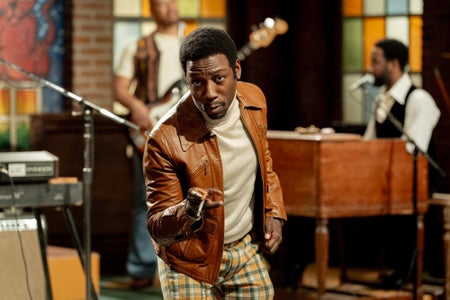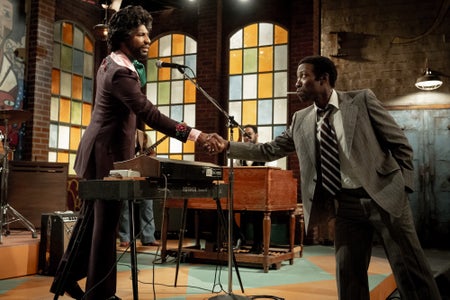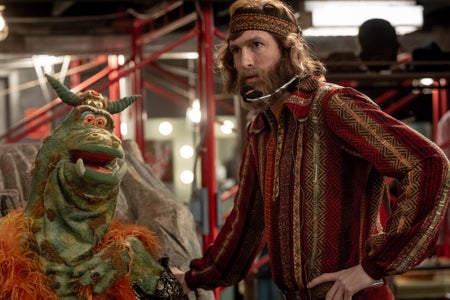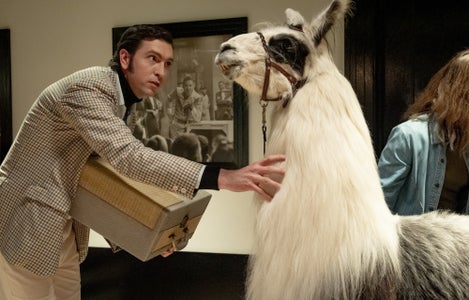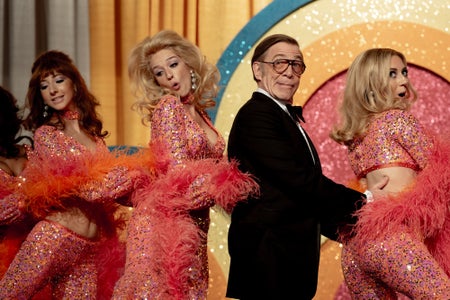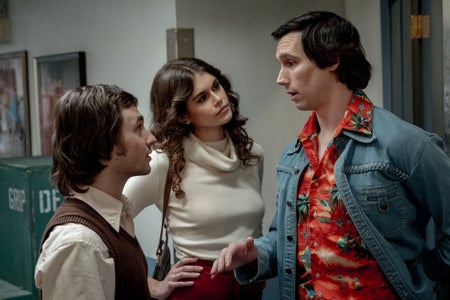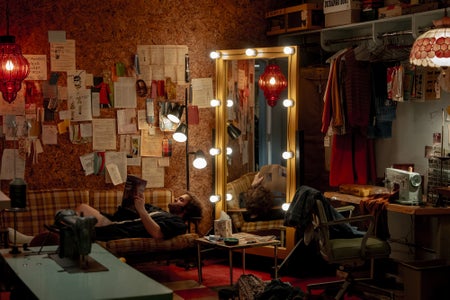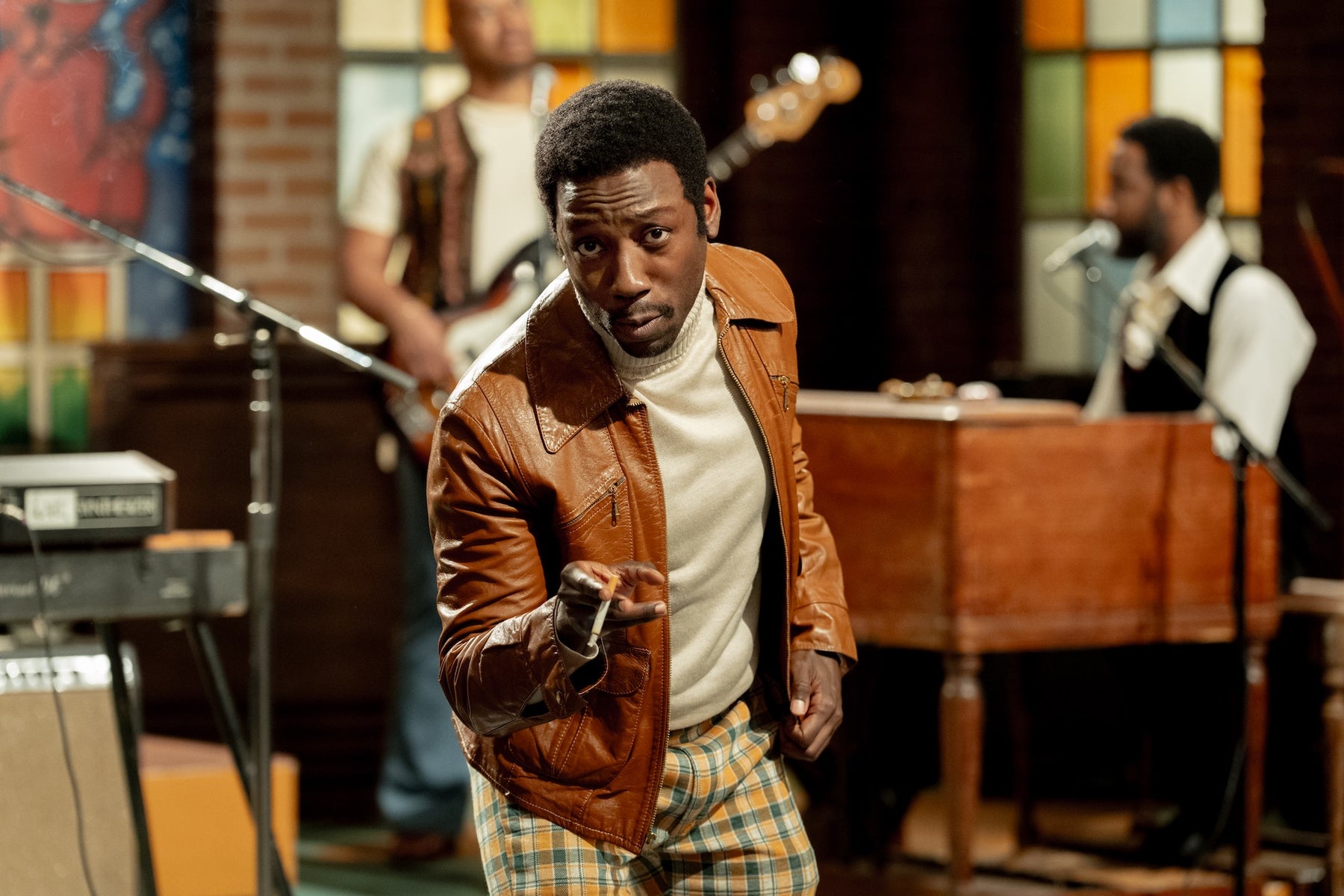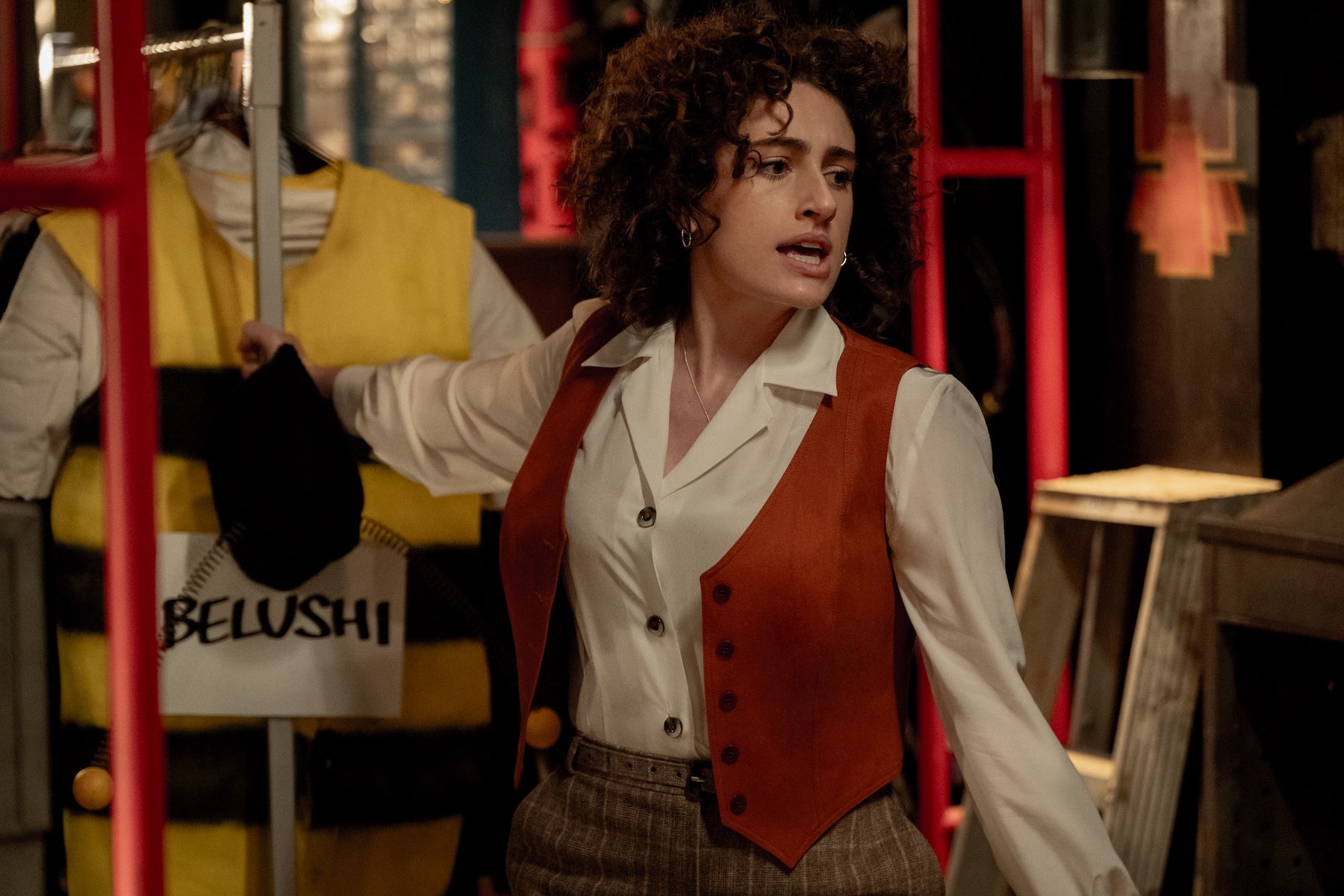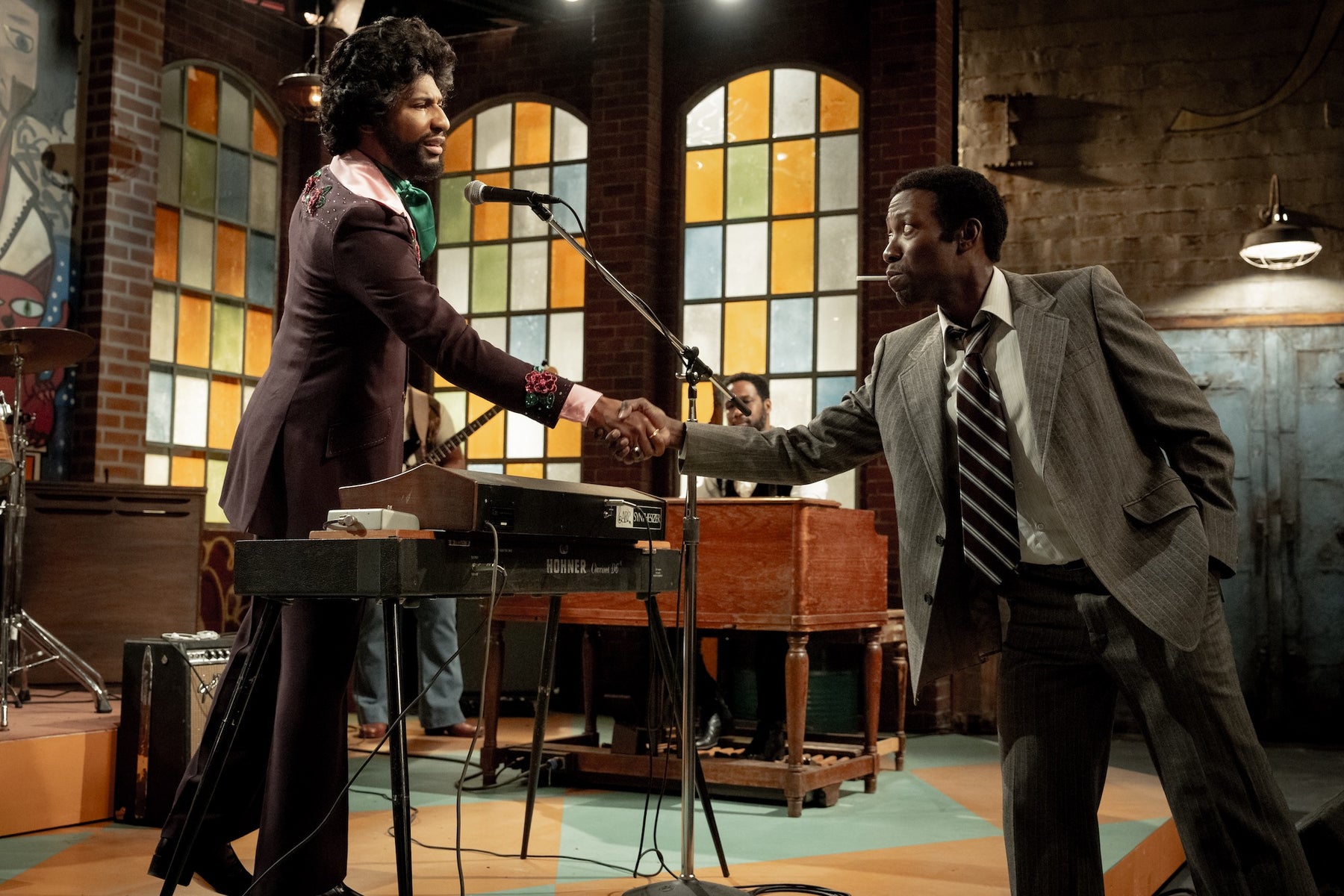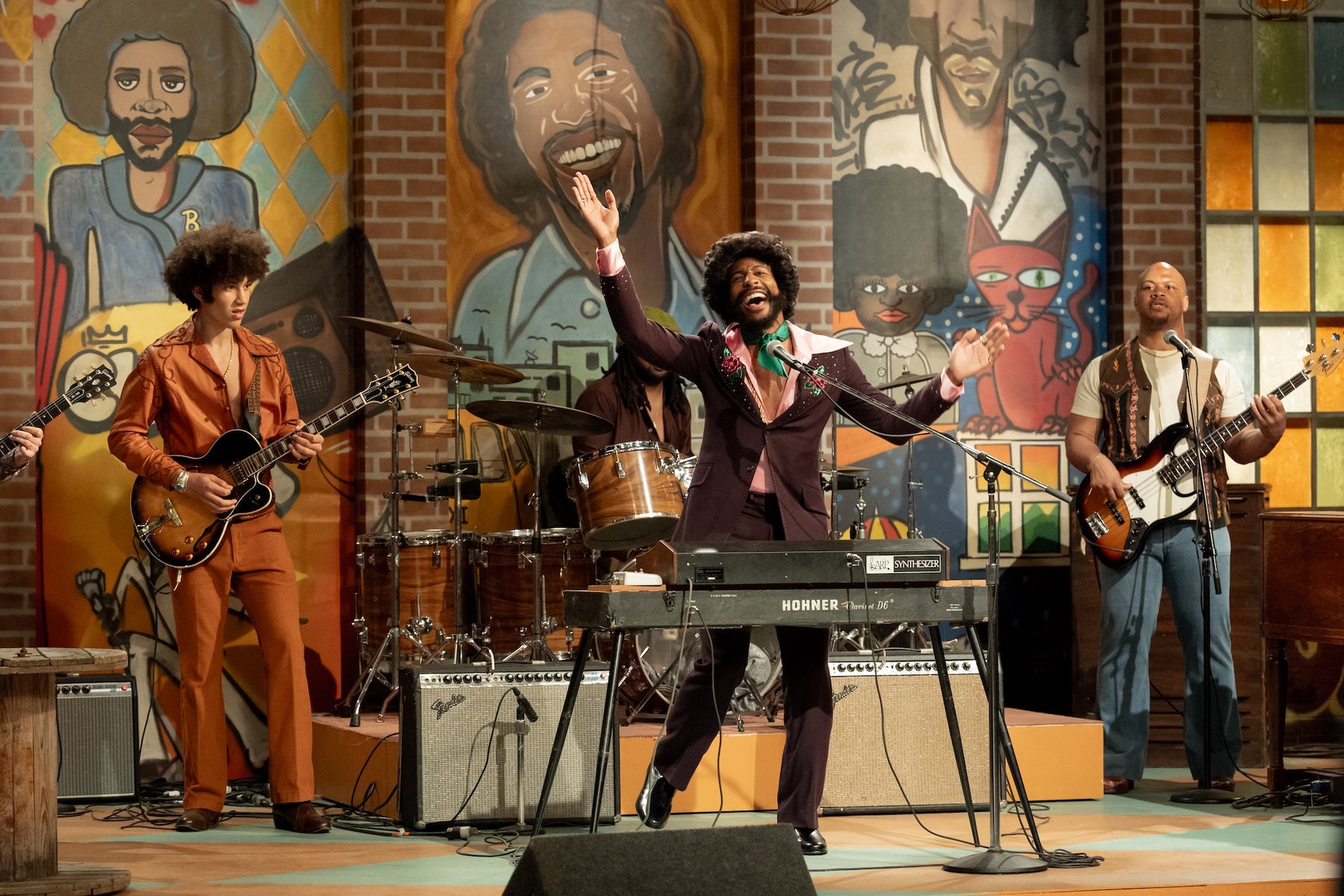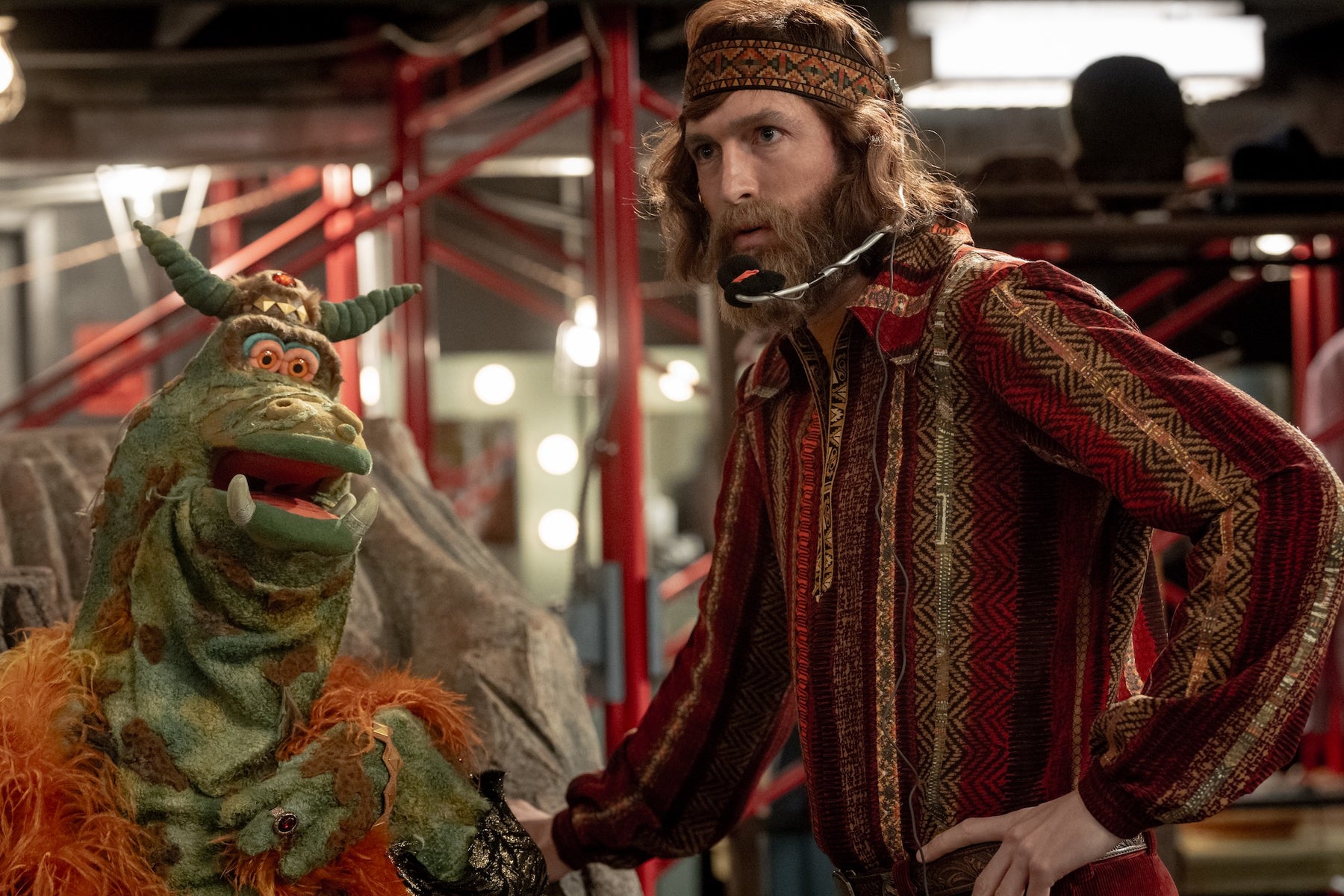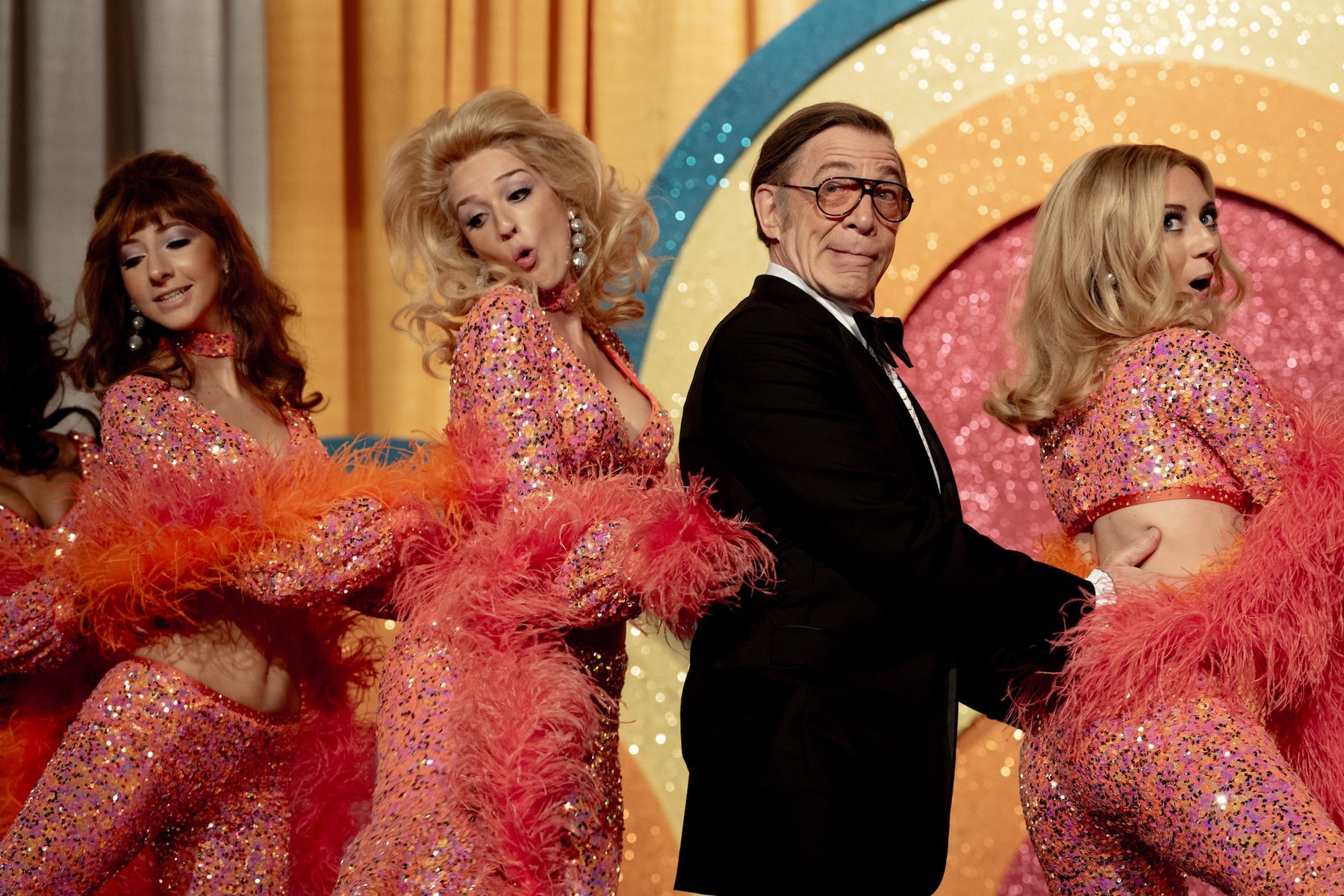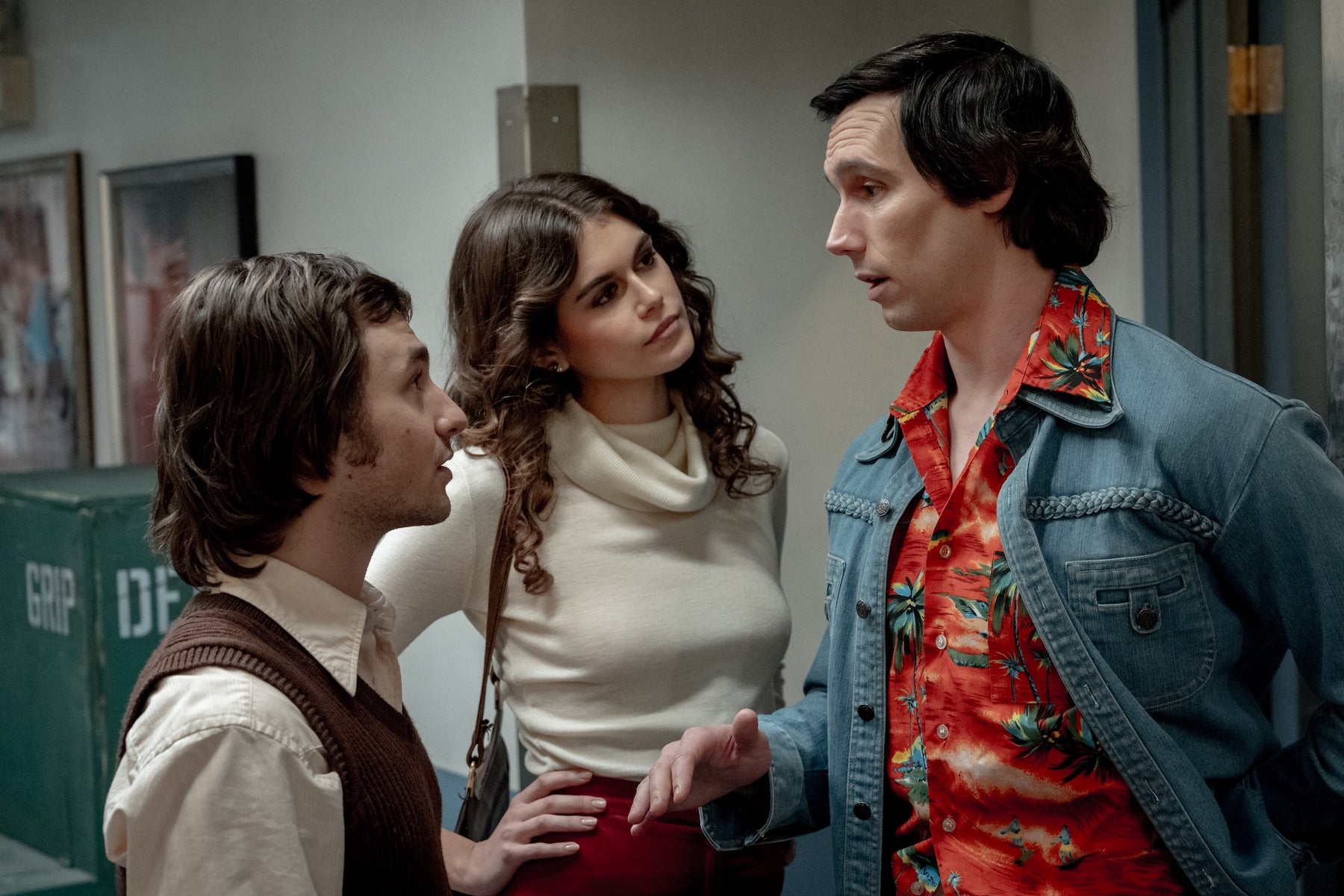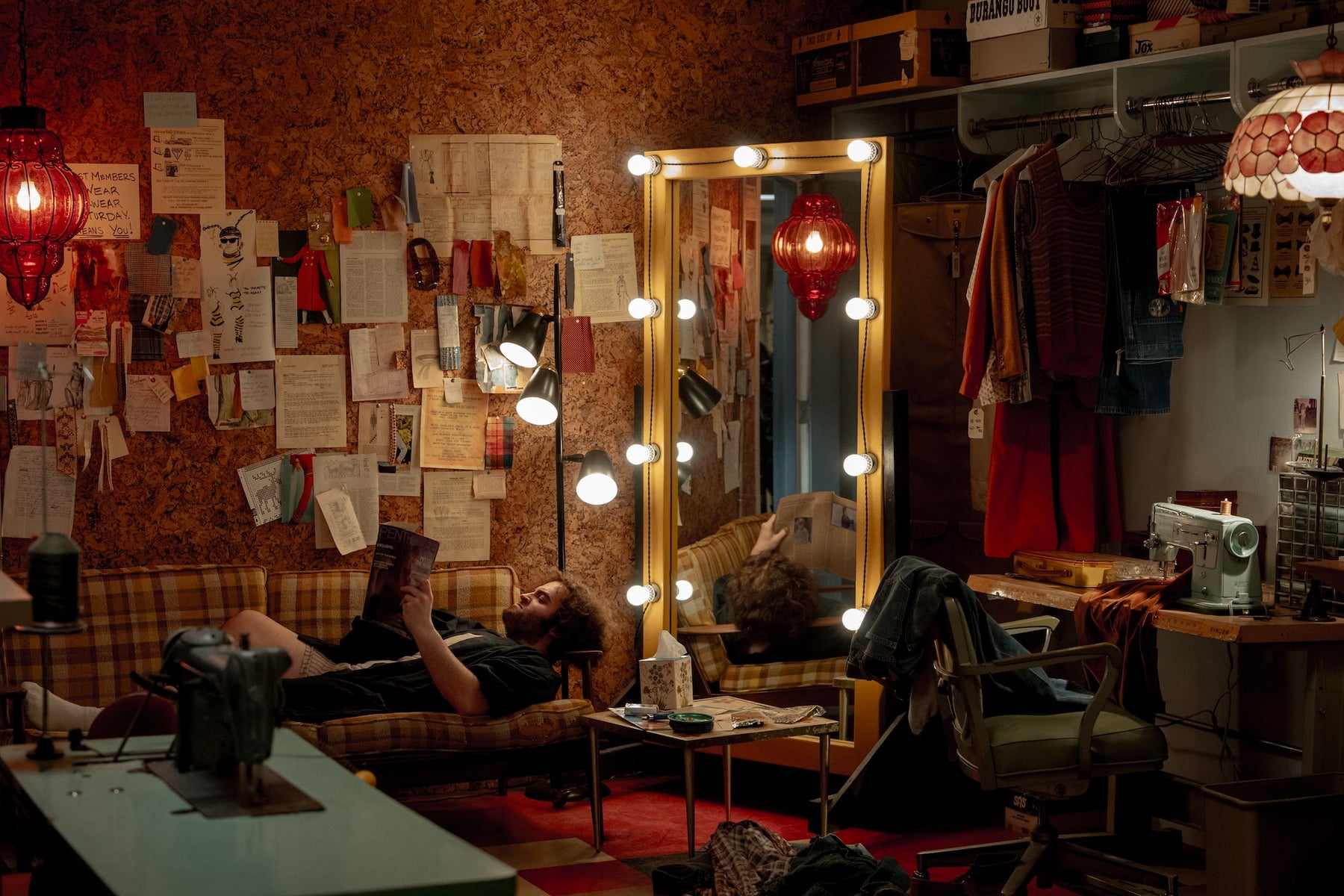After covering world events on five continents as a photojournalist, Hopper Stone (@hopper_stone) transitioned to shooting on film sets as a stills photographer in 1997. Fast forward to the current day, and Stone continues to shoot stills for movies, including his most recent work on set of the film, “Saturday Night.” Using the blazing fast Sony Alpha 9 III and the ultra-compact Sony RX0 II, Stone was able to navigate the rapidly-moving and challenging set for what he calls the best job of his career. We connected with him to learn more about the challenge of being a stills photographer on a movie set, and why his Sony cameras and lenses were his chosen tools for the task.
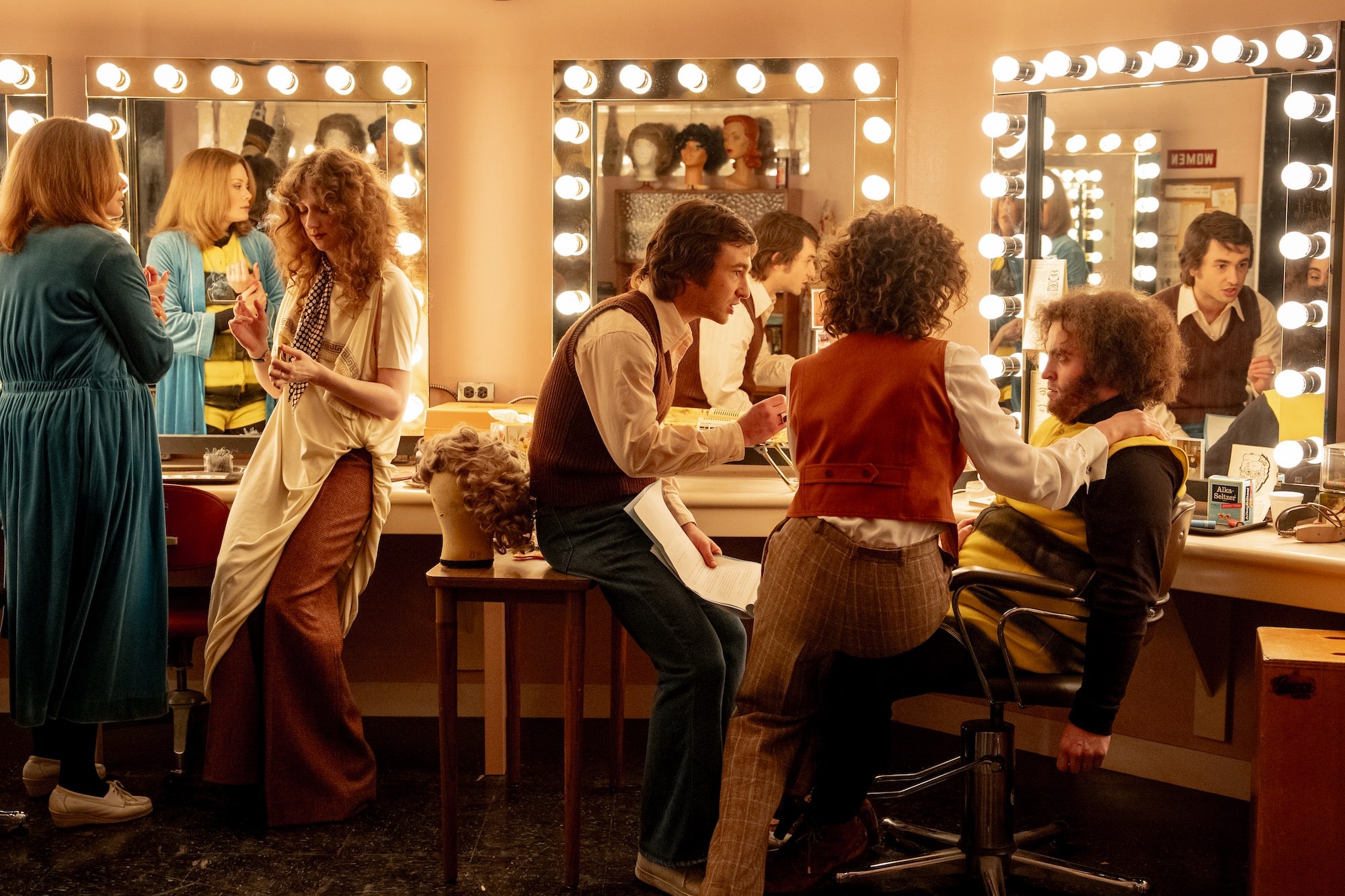
Photo by Hopper Stone. Sony Alpha 9 III. Sony 24-70mm f/2.8 G Master II. 1/200-sec., f/4, ISO 4000
Accepting The Challenge
When Stone was first sent the job to photograph stills for the Saturday Night movie, he was very grateful for the opportunity. The film is about the night of the 1975 premiere of NBC's Saturday Night, later known as Saturday Night Live. “Keep in mind, I was 13 years old when that first episode of Saturday Night came out,” Stone shares, “so I have an actual memory of the first episode and it was what we all talked about in school.”
While he was excited about the opportunity, he was also told he probably wasn’t going to get anything. “They said the camera never stops moving through the script,” he explains. “They were creating a documentary-style film in a two-story set that was designed to be just like Studio 8H. It was all enclosed, so all of the lighting fixtures matched up with the time period. It’s all hallways, elevators, doorways and dressing rooms – so there just wasn’t going to be much room for me to do my job. But Jason Reitman is an amazing director and it was a great project. I said, ‘Sure, let’s do it.’”
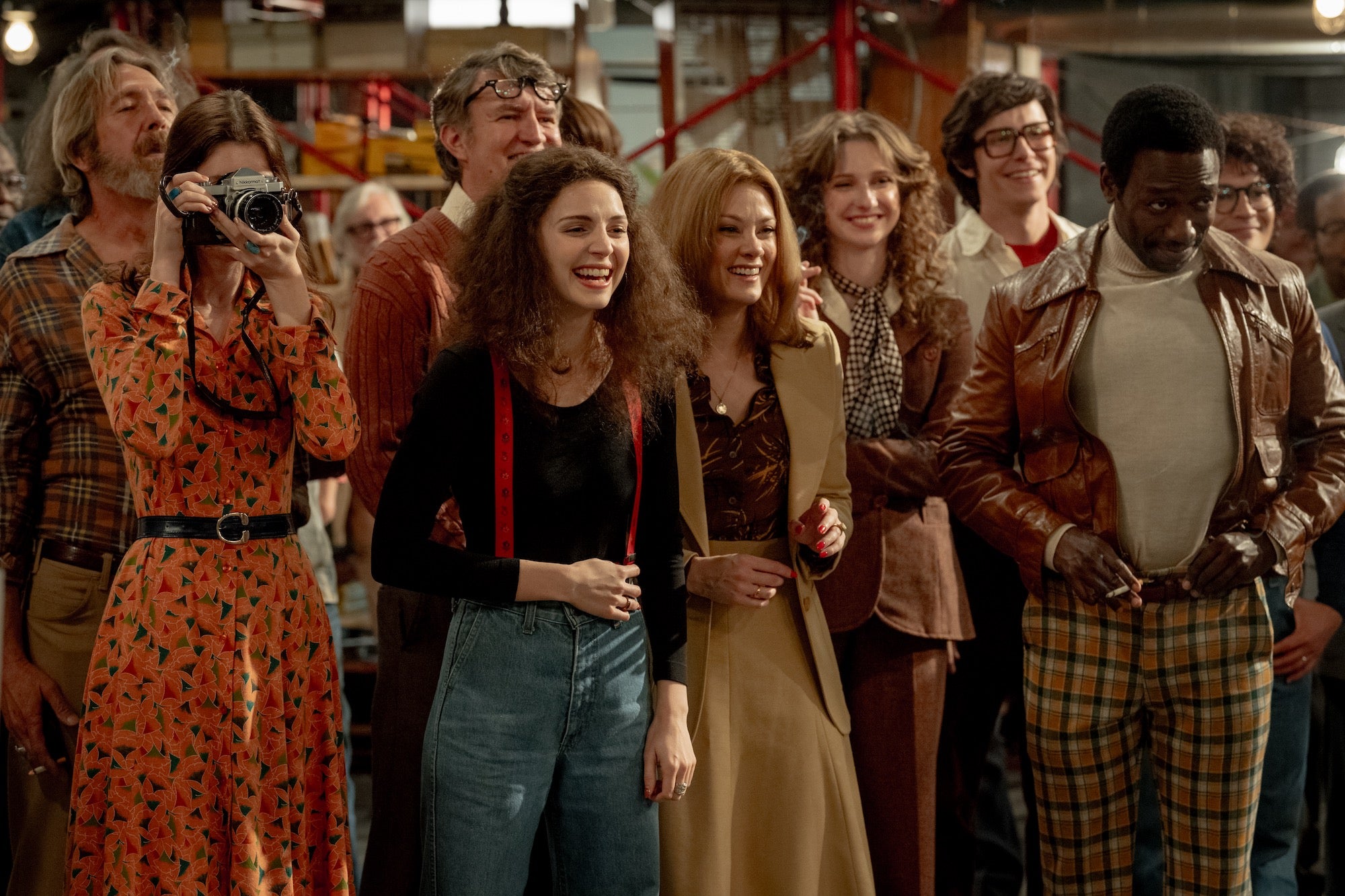
Photo by Hopper Stone. Sony Alpha 9 III. Sony 70-200mm f/2.8 G Master II. 1/160-sec., f/4.5, ISO 4000
Fitting In By Knowing How & When To Stay Out
Since Stone knew it was going to be a tight set on the filming days, he had to get creative at times. When you're a stills photographer on a film set, your job is obviously secondary to the director getting the footage for the film. Stone says that means knowing when and how to stay out of the way. “The first day was a six-page uninterrupted shot,” he explains. “They were going to do a big rehearsal of it the day before filming it, so I figured I could work out the blocking of the actors to get a plan of where I would be to shoot.”
The film camera during this shoot was on a dolly with a remote head that someone would operate from off in the corner. Stone shares, “It was just the dolly grip pushing the dolly with the camera on it, and the camera moves however the operator twists the wheels. As the dolly began to move during the first rehearsal, I took one step to start planning my shot and the director, Jason Reitman asked me to step back because it was a complicated shot to figure out. I stepped away to take some other shots for the art department and as rehearsal went on I knew it was going to be tough for me to get in there to get anything on that first day of filming.”
When the first day of filming arrived, Stone knew he needed to get something without interrupting Reitman’s job as the director. “That’s when I had an idea with my Sony RX0 II,” Stone explains. “I asked the remote head tech if I could mount it under the box and camera. The camera crew was very nice to me and let me do so.” Reitman saw him halfway through filming and Stone told him not to worry, that he had been getting stills the entire time. Reitman was impressed when Stone showed him what he had done with the Sony RX0 II.

Photo by Hopper Stone. Sony RX0 II. 1/400-sec., f/4, ISO 6400
“Honestly, one of the hardest parts of the still photography job,” Stone says, “especially when you're working with a cast or the crew that have all worked together before or a director who has their people, is keeping up and fitting in. They have a shorthand and suddenly you’re the new person, so the hardest thing is gaining people's trust. That is often our first hurdle on set is gaining the trust of the director, the actors, the first AD, the camera crew, the dolly grip, the boom operator – all the people whose way I could potentially be in. The crew, the actors, everyone on set, was nothing but gracious to me. They were lovely and accepting, especially since Reitman typically has a different stills photographer on his sets.”
Shooting With Sony On Set
Not every day of filming was as complicated to capture as the first, but Stone still had to be nimble and fast, and for that he had his Sony Alpha 9 III in hand. He was initially drawn to the Sony Alpha 9 III's responsive autofocus system, which is critical in fast-paced environments like a film set. The camera's autofocus tracks subjects with precision, even amid bustling scenes filled with background actors and moving elements. This reliability ensured that the right actors remained in sharp focus, regardless of the on-set chaos.

Photo by Hopper Stone. Sony Alpha 9 III. Sony 24-70mm f/2.8 G Master II. 1/500-sec., f/2.8, ISO 3200
“It almost doesn't matter where my autofocus point is,” he says. “I just kind of wave the Sony Alpha 9 III, and it catches an eye, and the focus just stays on that eye. It's beyond brilliant. And if someone turns away and you lose the eye and it's just on their head, the camera compensates. On a movie like Saturday Night where we had so many background actors, all the stagehands, and people walking through, I still wouldn't lose my actor with others walking through my frame.”
Stone also used the Sony Alpha 9 III’s burst button to shoot at 120 fps, and remembers the speedy shooting for one scene in particular. (Don’t worry, this scene is in the trailer - so no spoilers.) “There’s a part in the movie where a whole array of lighting comes crashing to the floor,” Stone explains. “I would hear the effects guys start to drop it so I would know it was about to fall, and then I would just put my pinky on that button to get every single moment of the fall. You never know with stunts and things moving quickly on set, so having as many options as I could from that moment was really helpful.”
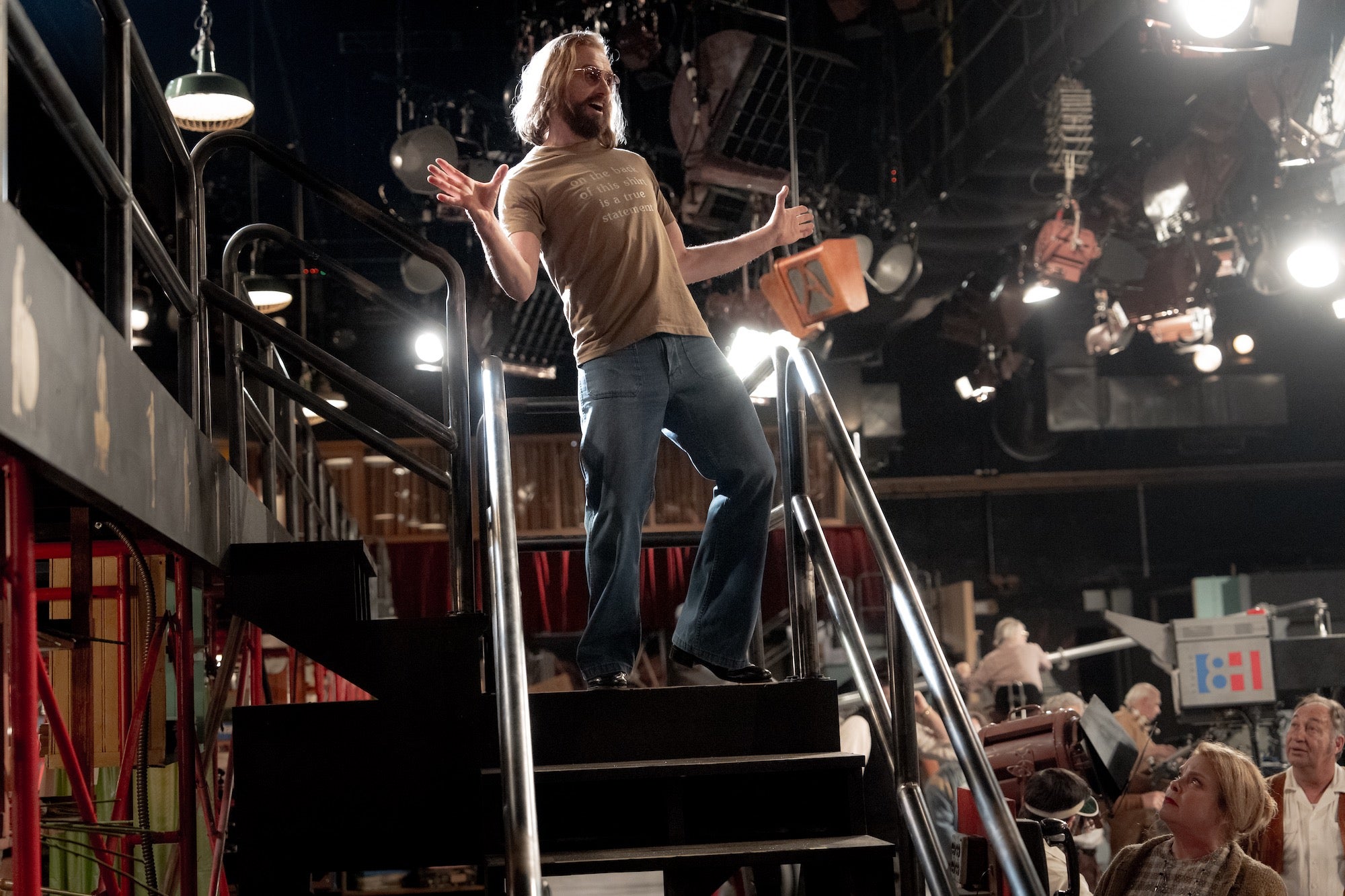
Photo by Hopper Stone. Sony Alpha 9 III. Sony 24-70mm f/2.8 G Master II. 1/320-sec., f/3.2, ISO 5000
Another reason he chooses to use his Sony on set is because he says the colors are just better. “I found that, especially working on film sets where you've got a lot of mixed lighting and very challenging conditions, everything just held together really well. The colors looked really good. Our cinematographer Eric Steelberg thought I had color corrected them because they matched the film footage so well, but it was just the camera handling the changes and colors perfectly.”
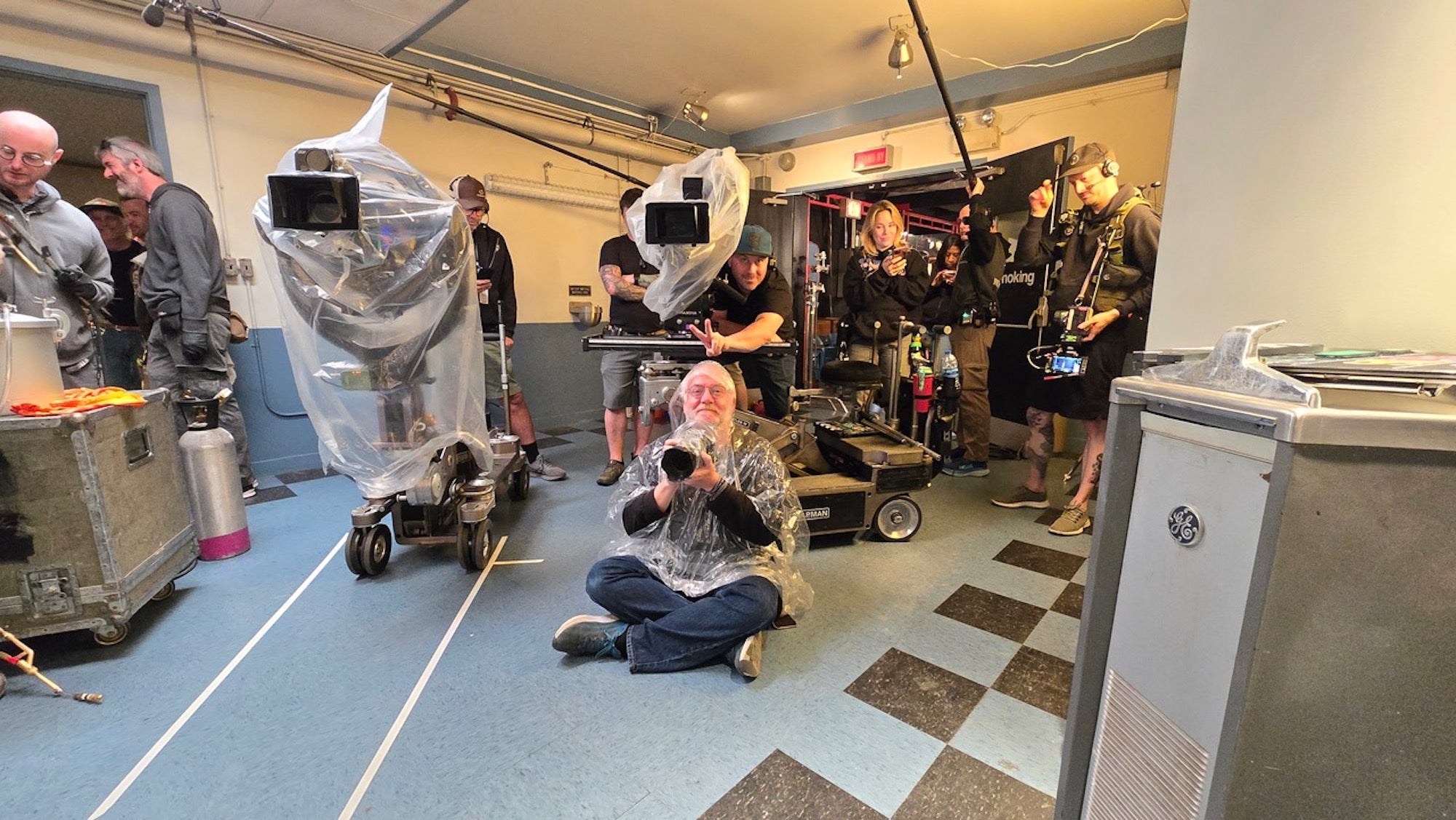
Hopper Stone on set, Saturday Night
Because the filming of the movie moved so quickly, Stone wanted to be prepared with versatile focal lengths so he could be flexible enough to capture the acting while also staying out of the way of the filming. Attached to his Sony Alpha 9 III, he mostly relied on the Sony 24-70mm f/2.8 G Master II and Sony 70-200mm f/2.8 G Master II. From close-up emotional portraits to capturing the dynamics of larger scenes, these gave him the necessary flexibility to adapt to different shooting scenarios.
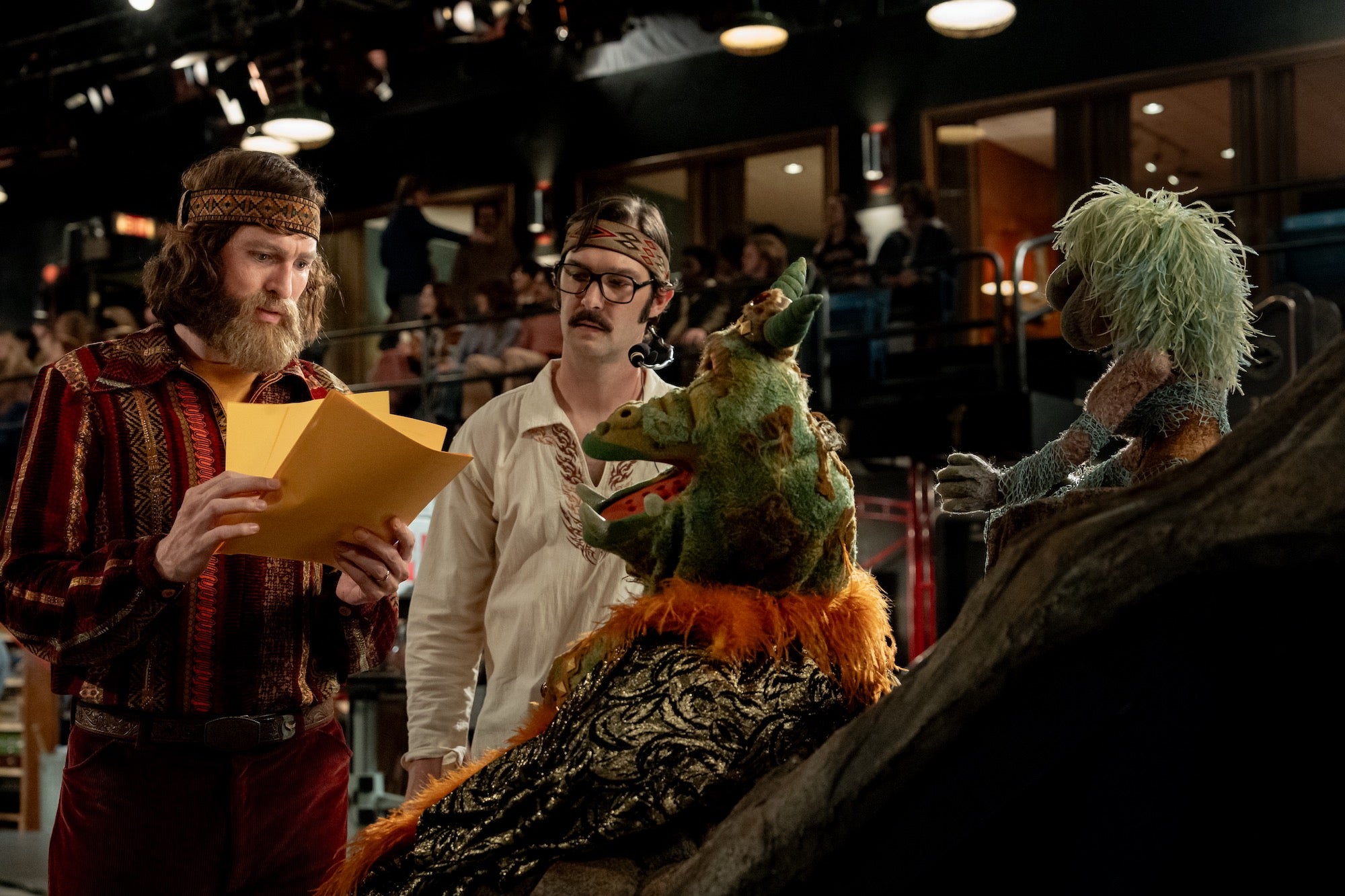
Photo by Hopper Stone. Sony Alpha 9 III. Sony 24-70mm f/2.8 G Master II. 1/400-sec., f/4, ISO 6400
“What I like about the Sony system is I find it to be very versatile,” Stone says. “You can find the right camera body for what you need. We're constantly redlining our cameras on set and pushing them to the absolute limits, and the Sony Alpha 9 III handles it well. I love that Sony hasn't forgotten about the still photographers.”

Hopper Stone
Saturday Night is now playing in theaters. See more of Hopper Stone’s work on Instagram (@hopper_stone) and at stonefoto.com.
